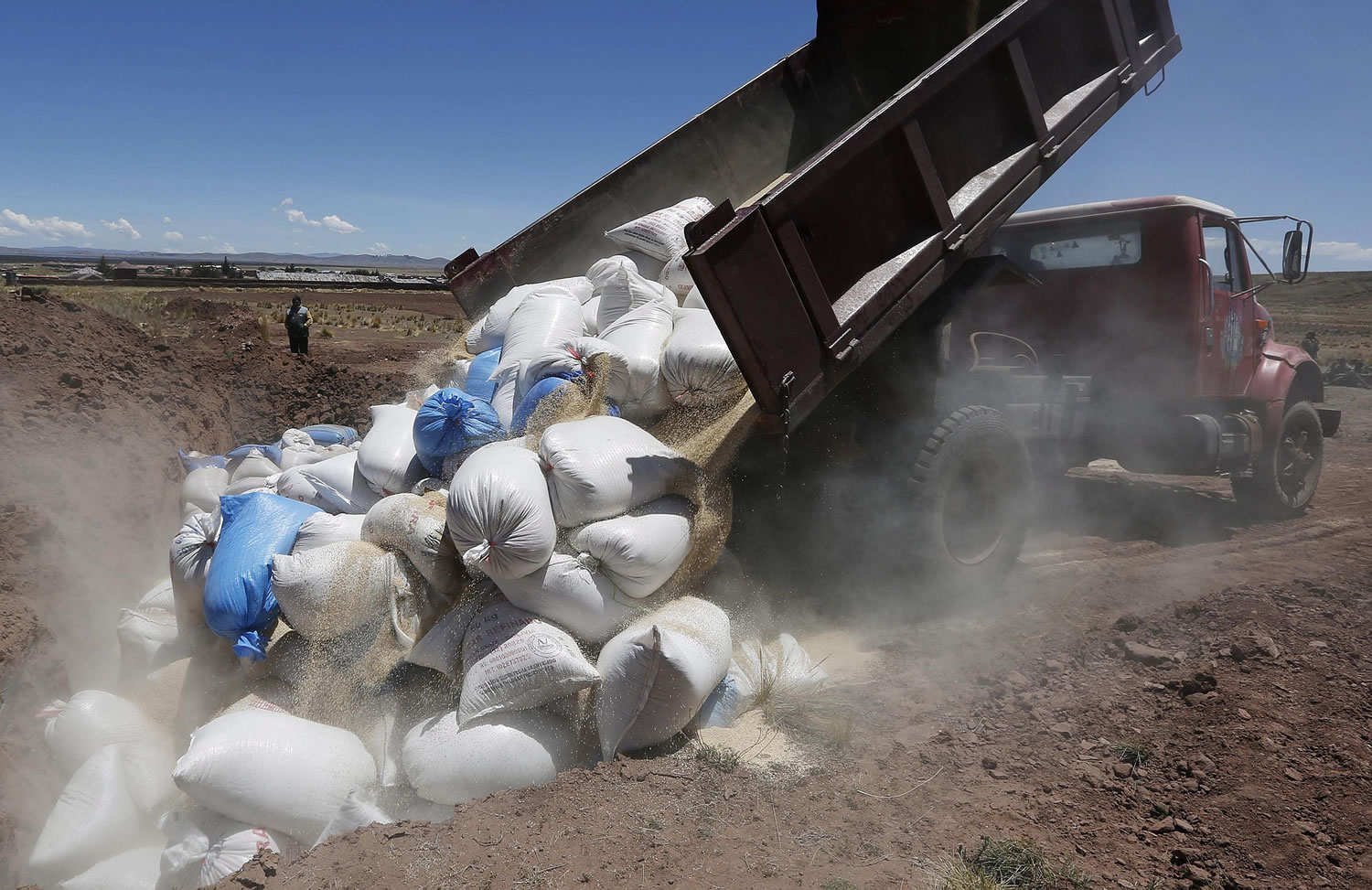LA PAZ, Bolivia — International demand for quinoa continues to boom, and that’s fueling an increasingly bitter commercial feud between Bolivia and Peru, the two main producers of the Andean “superfood.”
The fight pits hardscrabble, traditional organic growers mostly in Bolivia’s semi-arid highlands against upstart Peruvian agribusinesses concentrated on the Pacific coast that include heavy pesticide users. Peru is about to overtake Bolivia as the top exporter, worrying Bolivians about their ability to compete.
As Peru boosts production of cheaper factory-farmed quinoa, the grain is increasingly being smuggled into landlocked Bolivia to be mixed with, and sometimes sold as, organic quinoa — Bolivia’s specialty, growers and government officials say.
“They are trying to force us to lower prices,” said Reynaldo Mamani, who along with some 500 other Bolivian quinoa farmers marched on the presidential palace Monday to demand that President Evo Morales halt the invasion of Peruvian quinoa.
A week earlier, Bolivian authorities took 23 metric tons of Peruvian quinoa seized at a checkpoint near the border, dumped it into a ditch, soaked it with diesel fuel and burned it for TV crews — an extreme measure in a country where nearly half the people are poor and roughly one in five toddlers suffers from malnutrition.
Peru and Bolivia both made quinoa, which scientists consider as nutritious as mother’s milk, an export priority even before the United Nations declared 2013 as International Quinoa Year. Although marketed as a grain, quinoa is actually a seed from the goosefoot plant family.
A decade ago, Peru accounted for just 6 percent of global sales while Bolivia had 90 percent, according to U.N. figures. But Peru is on track to supplant Bolivia this year as the top exporter, having doubled production from 2013 to 95,000 metric tons amid strong demand from the U.S. and Europe.
Peru’s higher output stems from greater use of insecticides and chemical fertilizers as agribusiness steps up cultivation in coastal valleys, where there are two harvests a year compared to one in the highlands.
“It is a smaller grain, and we know there is very little organic in Peru,” said Eduard Rollet, president of San Francisco-based Alter Eco, a “fair-trade” company that buys quinoa directly from organic Bolivian farmers.
But with quinoa prices increasing eightfold over five years, “in the U.S. a lot of buyers from supermarkets are looking at legally mixing quinoa from Peru and quinoa from Bolivia as a way to reduce price,” Rollet said.
Organic quinoa now fetches up to $10 a pound retail in the United States, with nonorganic available for as much as half that price.
But for producers, the wholesale price for organic quinoa has dropped from a peak of a little over $8,000 a metric ton early this year and is now down to about $6,000, Rollet said. Nonorganic quinoa fetches considerably less.
“There is so much supply on the market because of Peru’s big production that prices simply must go down,” said Pablo Laguna, a Bolivian anthropologist and quinoa expert. “The price downturn is irreversible.”
That worries Bolivia’s small-scale quinoa farmers, who can’t produce as cheaply as their Peruvian competitors.
Mamani, the farmer who joined in the protest in La Paz, grows the prized, larger-seeded reddish-purple royal quinoa in Bolivian’s southwestern highlands at altitudes of nearly 12,000 feet, using llama manure as fertilizer.
He complains that a 110-pound sack that he could sell for $347 last year now fetches just $260. “That simply no longer covers my costs,” said Mamani, who uses pesticides but not chemical fertilizers. Global warming is also hurting production as highlands weather becomes more erratic — with more frequent frosts and dry spells.
Sergio Nunez de Arco, CEO of Andean Naturals, a U.S. importer of quinoa, said prices for Peru’s white-seed coastal “sweet” quinoa have been consistently dropping. The coastal quinoa is more apt to be contaminated by pesticide overuse because it grows on land previously occupied by other crops.
“Bugs love quinoa,” he said. “That’s one reason why it does so well in the highlands, where there are fewer pests.” The U.S. Food and Drug Administration has been rejecting some shipments of quinoa from Andean countries due to high pesticide residues.
Before foreign demand soared, nearly all quinoa was organic because most people who farmed it were poor.
If Bolivians want to compete with Peru, many believe, they need more government backing in certifying the organic product’s purity.
“It needs to demonstrate scientifically that it is the best, because it’s difficult to tell by taste,” said Laguna, the anthropologist.



